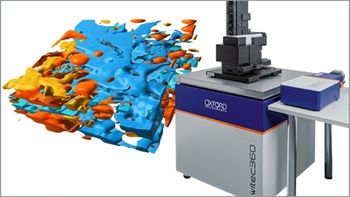
University of Pennsylvania Graduate Researcher Wins SPIE Medical Imaging Student Paper Award
A PhD student in the Department of Bioengineering at the University of Pennsylvania has won the 2024 Physics of Medical Imaging Student Paper Award, which is given out annually by the International Society for Optics and Photonics (SPIE), at the Medical Imaging Symposium in San Diego, California.
Olivia F. Sandvold, a PhD student in the Department of Bioengineering at the University of Pennsylvania, has won the 2024 Physics of Medical Imaging Student Paper Award, given by the International Society for Optics and Photonics (SPIE) at the Medical Imaging Symposium in San Diego, California.
Sandvold’s paper, “Hybrid spectral CT system with clinical rapid kVp-switching X-ray tube and dual-layer detector for improved iodine quantification,” discusses how clinical spectral CT imaging, while being effective in enabling quantitative material information and increasing diagnostic utility of CT, is challenged by a lack of sensitivity. This is most apparent regarding the technique’s issues with detecting low concentrations of iodine contrast material in pediatric patients. In the study, Sandvold and her collaborators combined the benefits of two different spectral CT techniques, kVp-switching and energy-sensitive detectors, that are currently in use today. They used a conventional X-ray source and detector in a prototype hybrid system; this system ended up delivering notable increases in signal-to-noise ratio and image quality compared to other current technologies. This approach can lead to improved spectral imaging performances that can lead to a more diverse range of patients and disease conditions being addressed.
The runners-up were Rickard Brunshog, a PhD student in the Physics of Medical Imaging Division at The Royal Institute of Technology in Stockholm, Sweden, and Grace M. Minesinger, a Medical Physics PhD student at the University of Wisconsin–Madison. Brunskog’s paper, "Experimental Evaluation of a Micron-Resolution CT Detector,” presented work on the experiment validation of simulation tools for a high-resolution, energy-sensitive CT detector. As for Minesinger’s paper, “FEM Deformable Liver Registration to Facilitate CBCT Guided Histotripsy,” it focused on research for the development and validation of a non-rigid motion model to improve the planning and accuracy of focused ultrasound histotripsy treatments. The award is sponsored by Konica Minolta Healthcare.
“We understand that scientific research is vital to advancing medical imaging to improve patient care and outcomes,” said John Sabol, the clinical research manager at Konica Minolta Healthcare. “We are pleased to recognize and support today’s student researchers as they work toward becoming the innovators of tomorrow.”
Additionally, more awards were presented to students at the conference, highlighting their work in analytical chemistry (1). The Image Processing Student Paper Award, which highlights quality papers in the Imaging Processing conference was awarded to Zhangxing Bian of Johns Hopkins University, with Aravind R. Krishnan of Vanderbilt University was the runner-up. The Computer-Aided Diagnosis Best Paper and Live Demonstrations Award recognizes outstanding papers that discuss the development and application of computer-aided detection and diagnosis (CAD) systems in medical imaging. This year’s winner was Christian Mattjie of Brazil’s Pontifícia Univ. Católica do Rio Grande do Sul, and the runner-up was Xuxin Chen of Emory University in Atlanta, Georgia.
Reference
(1) Medical Imaging Best Paper Awards. SPIE 2024.
Newsletter
Get essential updates on the latest spectroscopy technologies, regulatory standards, and best practices—subscribe today to Spectroscopy.




